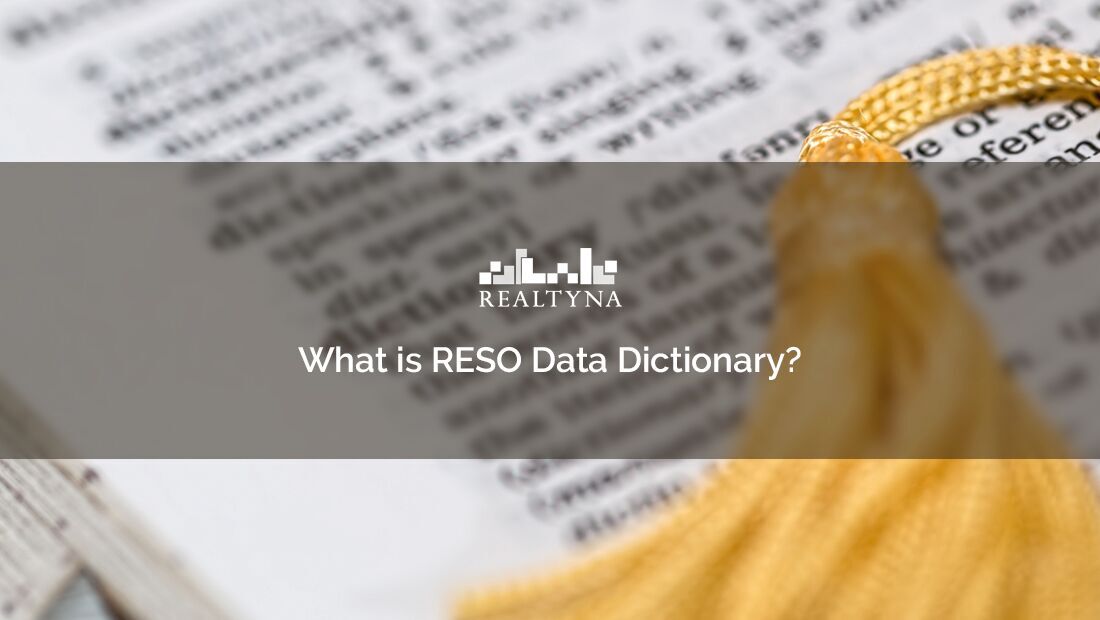
What is RESO Data Dictionary?
As a real estate agent or broker, you may have come across RESO Data Dictionary.
You may be wondering what it is, how it works, and how it relates to other RESO standards.
We’ve put together this explainer to help Realtyna clients and others get on the same page.
So let’s get into it.
RESO Data Dictionary is a set of guidelines designed by the Real Estate Standards Organization (RESO) to unify electronic property listing data across the 700+ MLS in the United States.
As its name suggests, it can be thought of as a type of dictionary.
But instead of providing definitions for obscure vocabulary, it provides definitions for the various data fields and resources that make up a property listing.
AN EXAMPLE
Let’s look at an example. With a normal dictionary we might look up the word “querulous.”, We would find:
Querulous
/adj/
1. full of complaints
This tells us the meaning of this word and its part of speech.
With RESO Data Dictionary we might look up “Cooling Field.”, We would find:
Definition: A list describing the cooling or air conditioning features of the property.
Group: Property Resource, Structure Group
Simple Data Type: String List, Multi
Suggested Maximum Length: 1024
This tells us the meaning of this data field, where it lives among other data fields, its type, and a suggested length for input values.
The RESO Data Dictionary has hundreds of these definitions for every possible piece of information that might be needed in a electronic property listing.
You can see why RESO calls the Data Dictionary the “Rosetta Stone for real estate data.”
WHY IS THIS NECESSARY?
The RESO Data Dictionary is necessary because the real estate industry is decentralized. Instead of a nationwide MLS warehousing all property listings in the United States, there are more than 700 small and medium MLS.
The idea is to provide some predictability in the way property listing data is structured and stored across all these MLS.
Continuing with our example above, under RESO Data Dictionary, “Cooling Field” pretty much has the same meaning and contains the same data everywhere.
This makes it easier for MLS to share data among themselves. And it makes it easier for technology providers to serve agents and brokers with IDX.
HOW DOES IT RELATE TO RETS/RESO WEB API
While RESO Data Dictionary governs the way property listing data is structured, RETS, and RESO Web API, govern the way it is shared.
RETS is a framework based on XML that allows IDX and other software to query an MLS database and synchronize updates.
RESO Web API, which will soon replace RETS, has a similar mission. The primary difference is that RESO Web API allows software to call directly from the MLS rather than creating a duplicate database locally.
If that’s a little techy, don’t worry. We have more explainers for RETS and Web API on the Realtyna blog.
We hope that provides some good background on RESO Data Dictionary. It’s an interesting resource that helps make our work possible.


Sorry, the comment form is closed at this time.